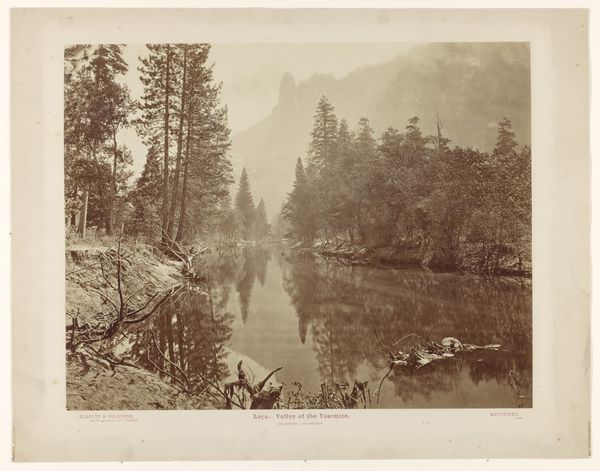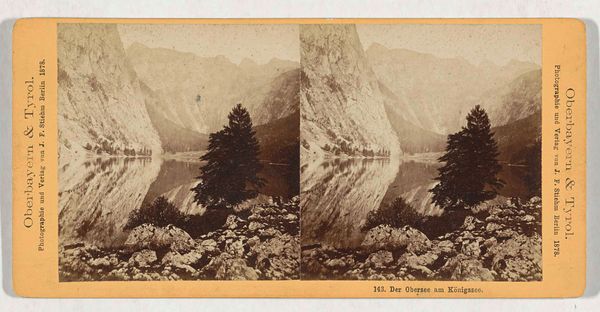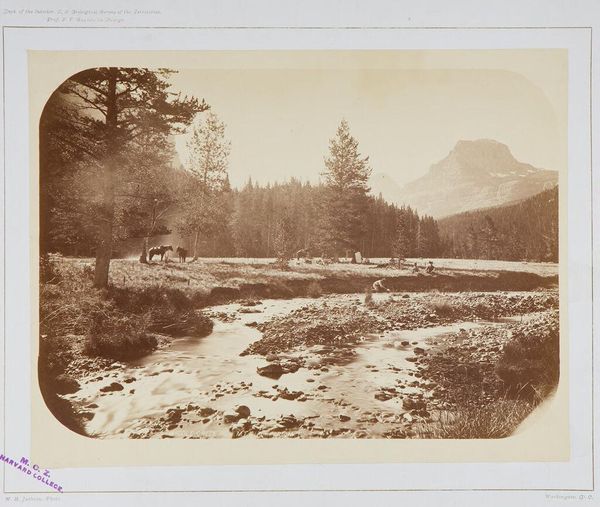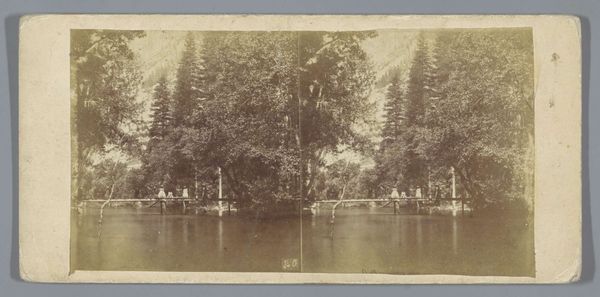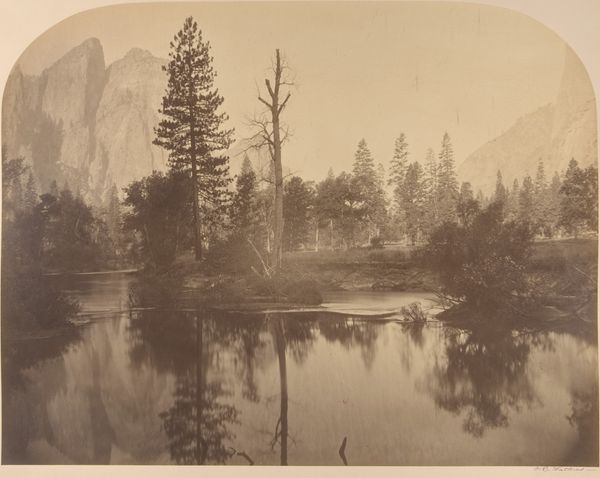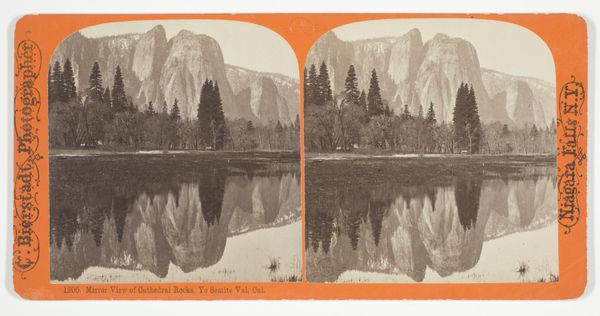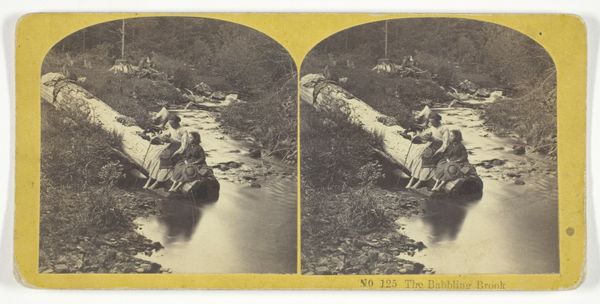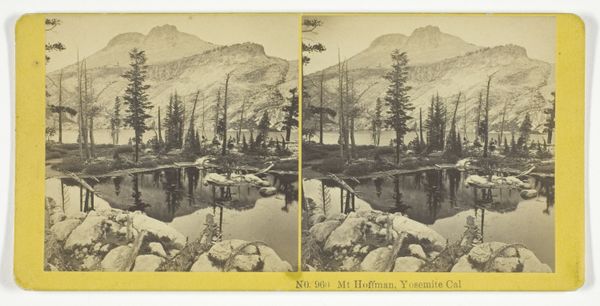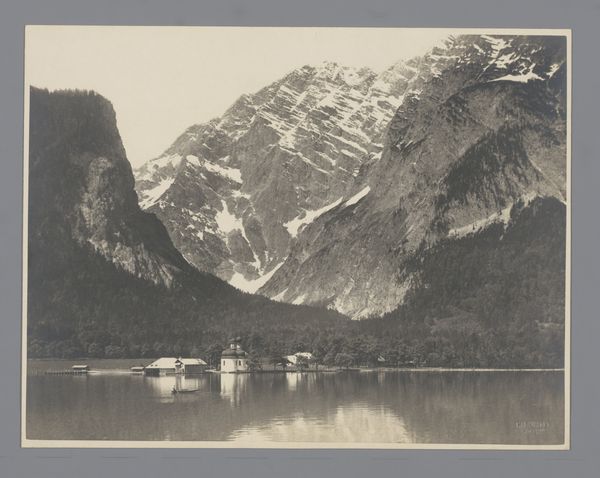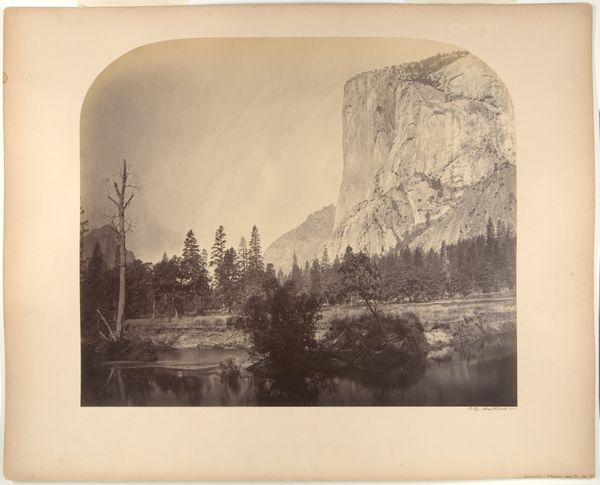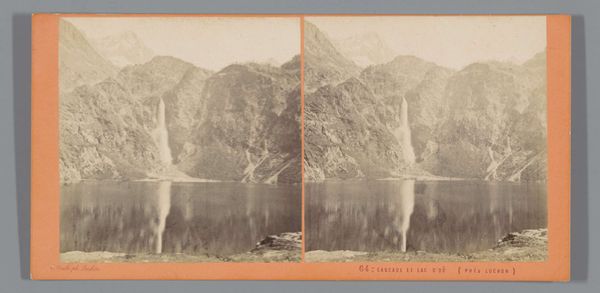
print, photography, gelatin-silver-print
#
16_19th-century
# print
#
landscape
#
photography
#
gelatin-silver-print
#
hudson-river-school
#
united-states
#
cityscape
Dimensions: 7.9 × 7.9 cm (each image); 8.5 × 17.4 cm (card)
Copyright: Public Domain
Editor: Here we have John P. Soule’s gelatin-silver print, "Mirror Lake and Mt. Watkins," taken around 1870. The reflection in the water is so still, creating a beautiful mirroring effect. What strikes you most about this photograph? Curator: Beyond the aesthetic beauty, I see a commentary on Manifest Destiny and the changing landscape of the American West. How might this idyllic scene mask the displacement and erasure of Indigenous peoples? Editor: I hadn’t considered that. So, you are saying this idealized landscape, popular within the Hudson River School aesthetic, participates in a narrative that romanticizes westward expansion? Curator: Exactly. These images often omitted the realities of colonial violence, presenting a vision of untouched wilderness ready for settlement. Consider, too, the men in the boat; who were they, and what role did photography play in promoting tourism to this area, consequently impacting the local ecosystem and culture? Editor: It's interesting how what seems like a simple landscape photograph can actually reveal so much about power, representation, and environmental impact. It's a constructed narrative, not just a reflection of nature. Curator: Precisely. And by examining it through a critical lens, we can challenge the romanticized notions that obscure these complex histories. Does this influence how you now understand the photograph's serenity? Editor: Absolutely. It’s made me rethink how landscapes, even seemingly untouched ones, are always intertwined with human actions and ideologies. Curator: It’s about unveiling the hidden narratives embedded within the image. The past is rarely silent.
Comments
No comments
Be the first to comment and join the conversation on the ultimate creative platform.


